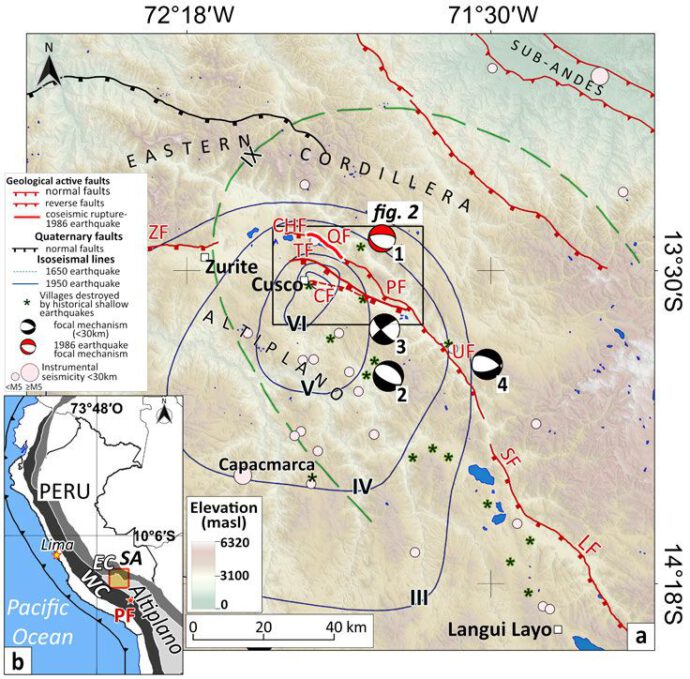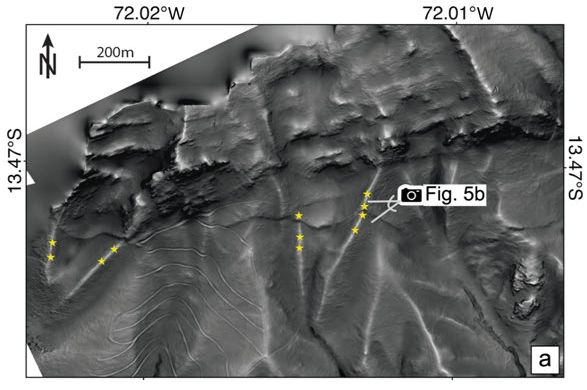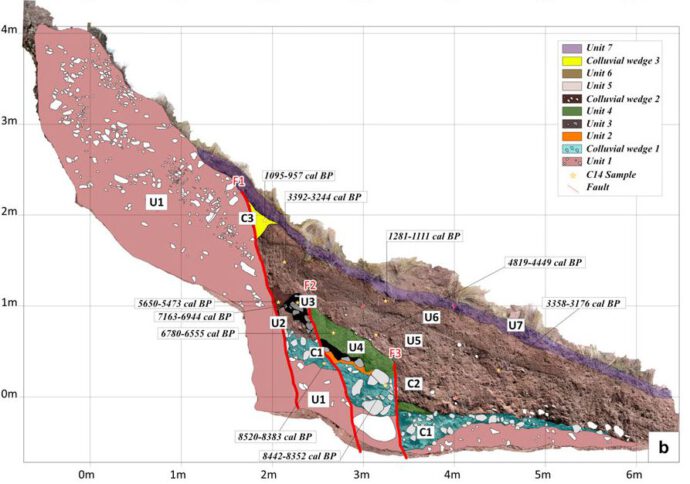In a new study, Rosell et al. look into the earthquake history of the Tambomachay Fault near Cusco in Peru. Cusco has been hit by damaging earthquakes in 1650, 1950, and 1986, and there is also some evidence for another earthquake during Inca times between AD 1418–1471. Very little is known about the causative faults. There is also very limited information on older events. The closest fault to the city is a 20 km-long normal fault at the northern margin of the Cusco Basin, the Tambomachay Fault. Here we constrained the fault’s Holocene slip rate by dating offset lateral moraines, and we identified three Holocene surface ruptures in a paleoseismological trench. The study was recently published open access in τeκτoniκa.

The Nazca Plate subducts under South America and led to the uplift of the Andes. The Altiplano of S Peru is slowly extending along a system of E-W to NW-SE oriented normal faults. Low deformation rates imply that individual faults are slow and that their recurrence intervals are on the order of thousands of years. Cusco sits in the 15-km-long, 3-km-wide hanging-wall basin of a number of faults, the Cusco, Qoricocha,
Tambomachay, Chinchero, and Pachatusan normal faults. They show fault scarps that cut through recent glacial deposits. The most impressive of these faults is the Tambomachay Fault. It crops out a few kilometres north of the city and is has 300-m-high, south-dipping triangular facets for more than 20 km along strike. Offset glacial moraines ( ca. 4 m throw) near the base of these triangular facets suggest that the fault has been active since the last glacial retreat. We used 10Be cosmogenic surface-exposure dating of boulders from the moraines to determine a depositional age of 14.2 ± 0.5 kyr. This gives us a Holocene slip rate of 0.30 to 0.37 mm/yr.

We opened a paleoseismological trench that showed a series of offset colluvial wedges in the hanging wall. We interpret three surface-rupturing earthquakes on the Tambomachay Fault in the last 8–9 kyr. This is constrained by radiocarbon dating. Single event offsets are between 0.4 m and 1.4 m, the earthquake magnitudes were probably around Mw 6.4–6.9. This is stronger than any instrumental record in the area. The ruptures we identified on the fault are pre-Inca times (>1 kyr). This means that the quakes that affected the Incas occurred on other fault strands near Cusco. An earthquake of Mw 6 close to
modern Cusco with its 500,000 inhabitants would have severe consequences.

Reference
Rosell, L., Benavente, C., Zerathe, S., Wimpenny, S., Aguirre, E., Walker, R., Grützner, C., García, B., Audin, L., Combey, A., Palomino, A., Delgado, F., Rodríguez-Pascua, M., Cardenas, J., & Carcaillet, J. (2023). Holocene Earthquakes on the Tambomachay Fault near Cusco, Central Andes. τeκτoniκa 1.2. https://tektonika.online/index.php/home/article/view/27



No Comments
No comments yet.